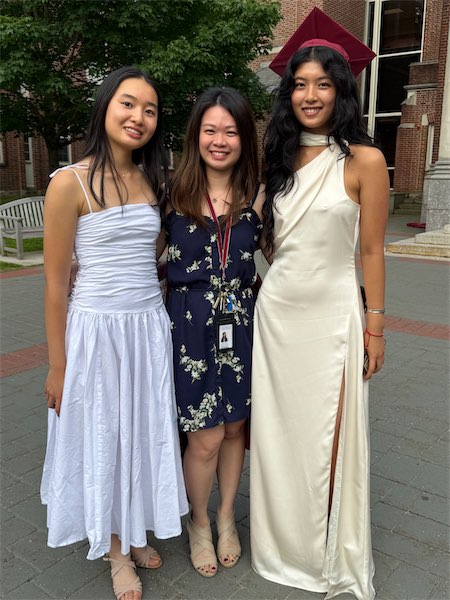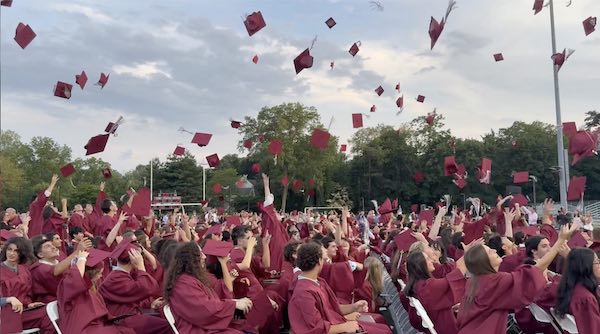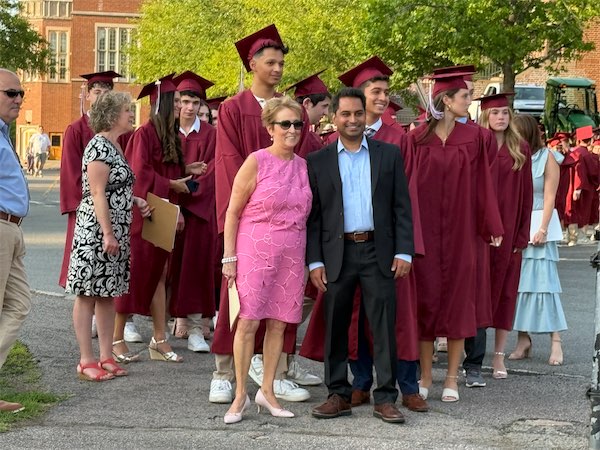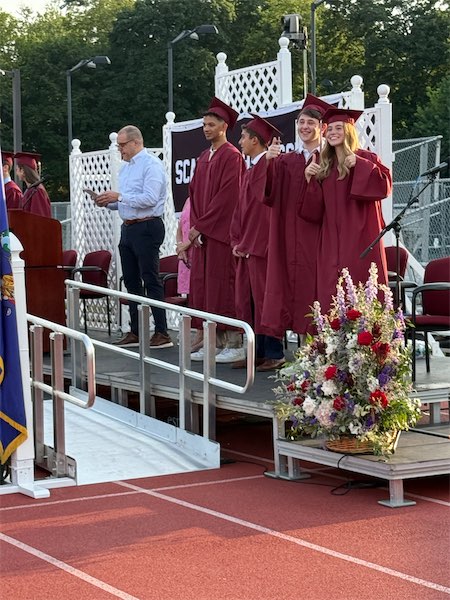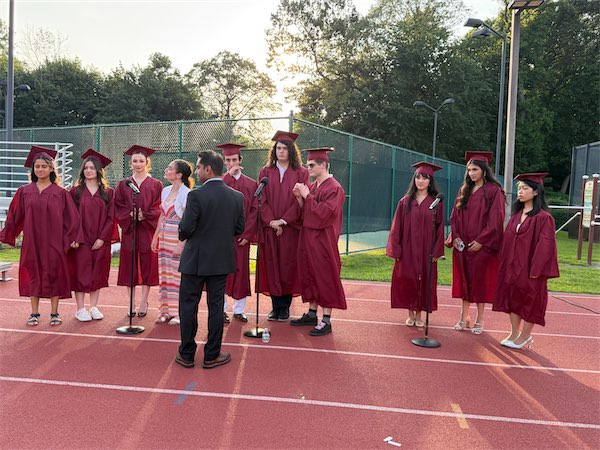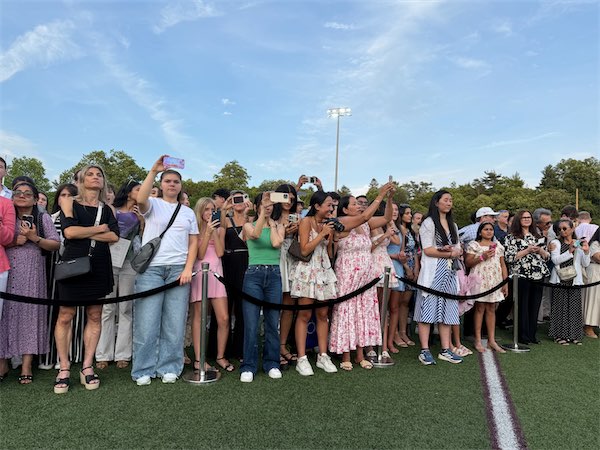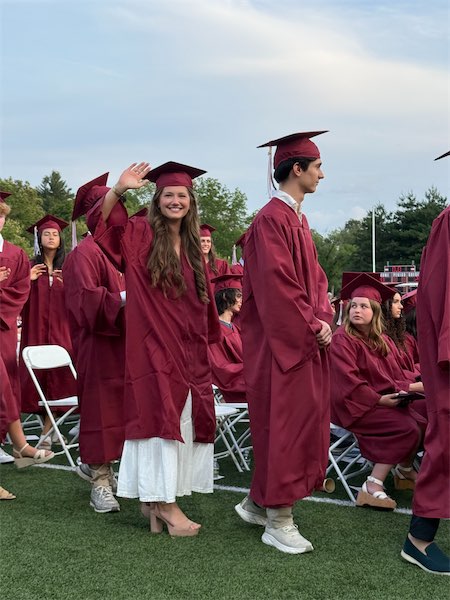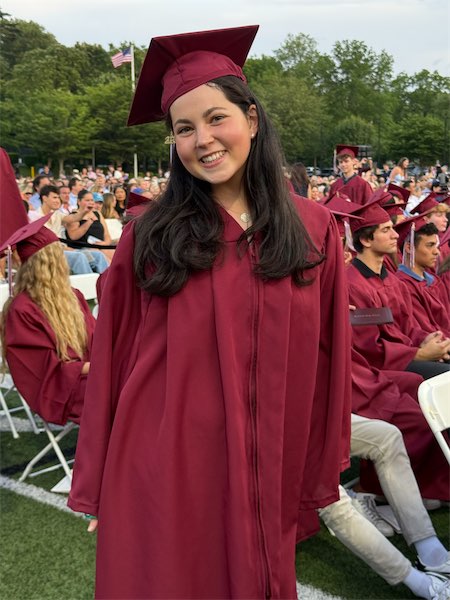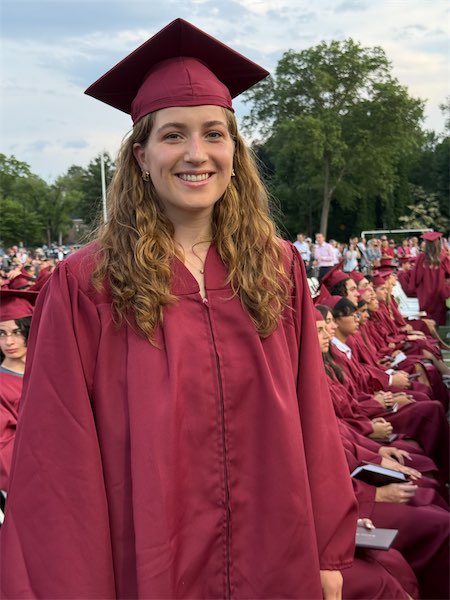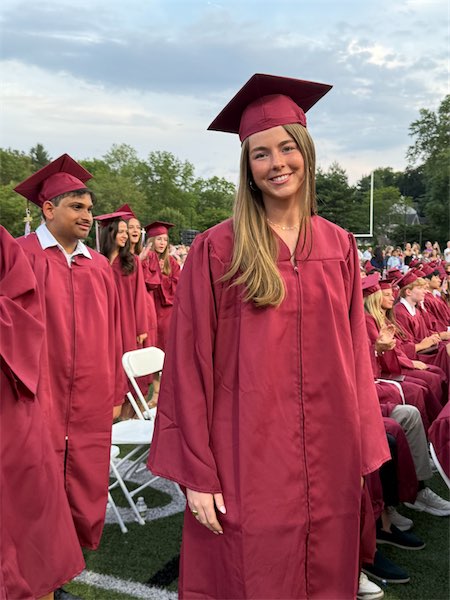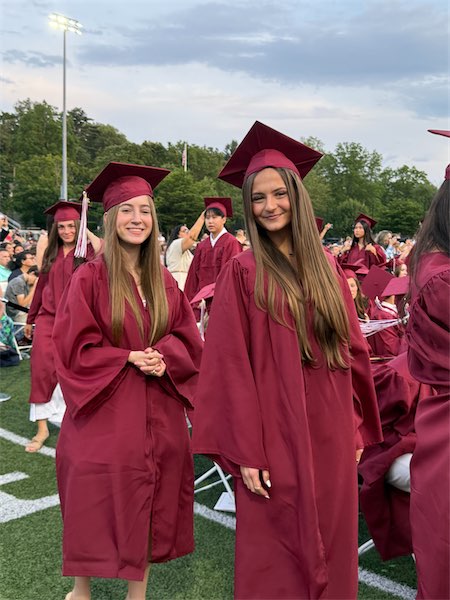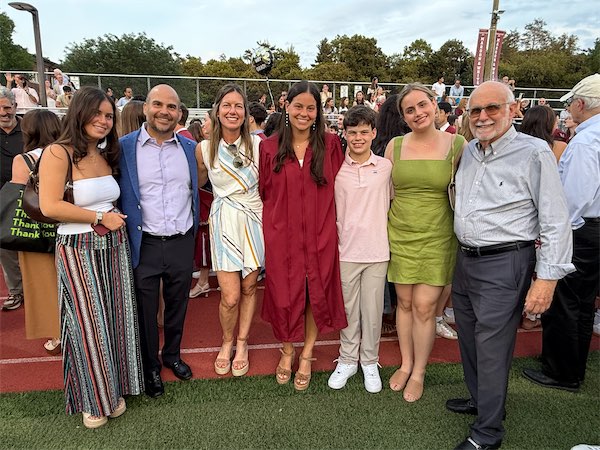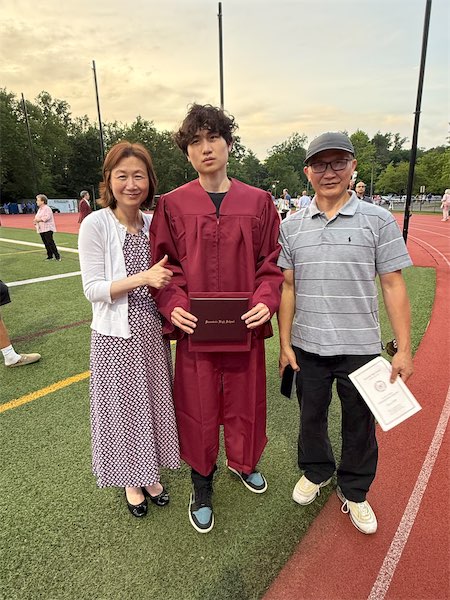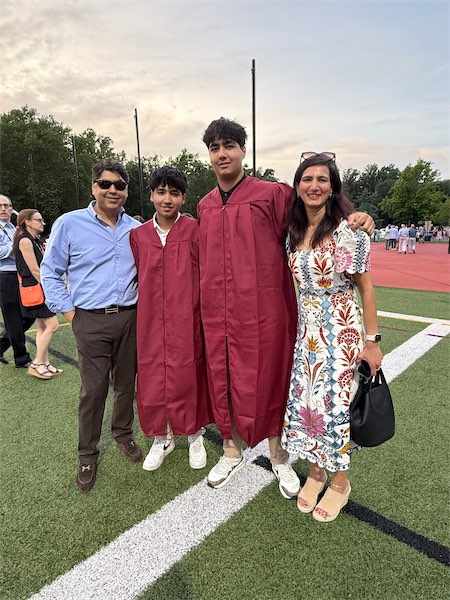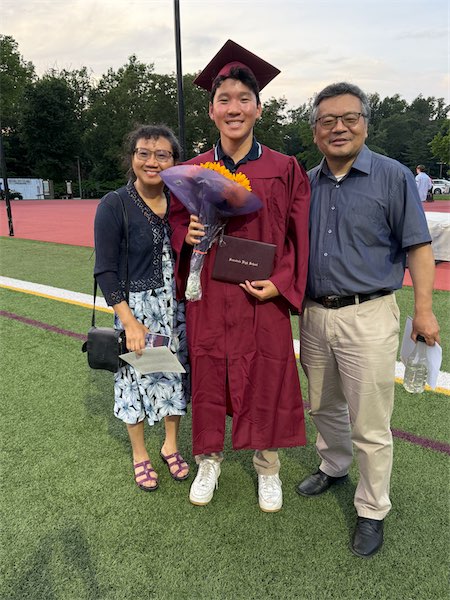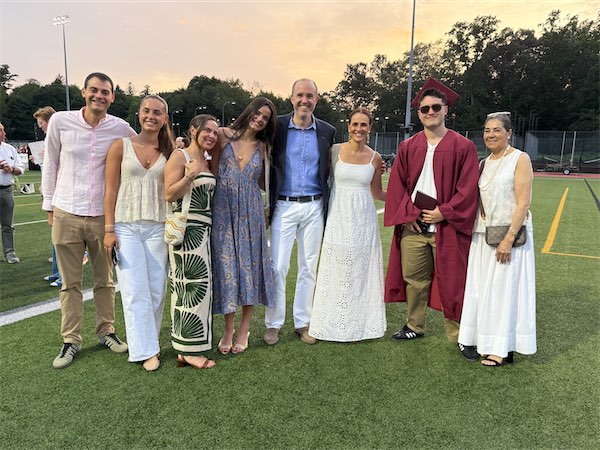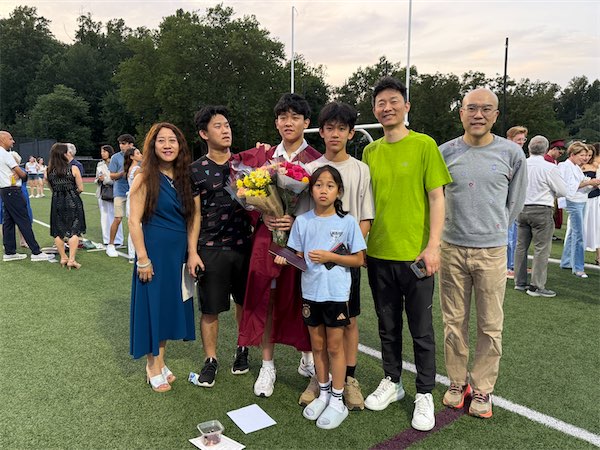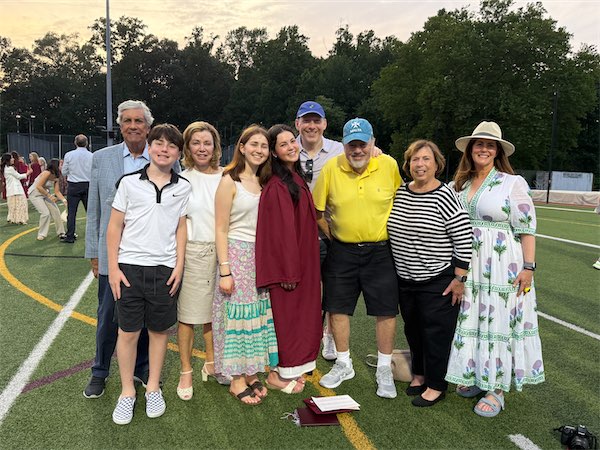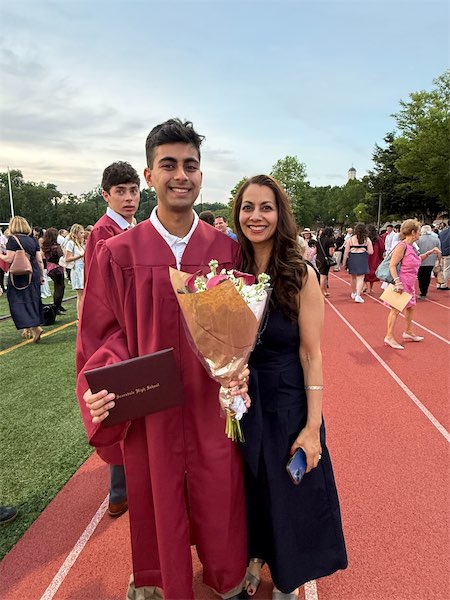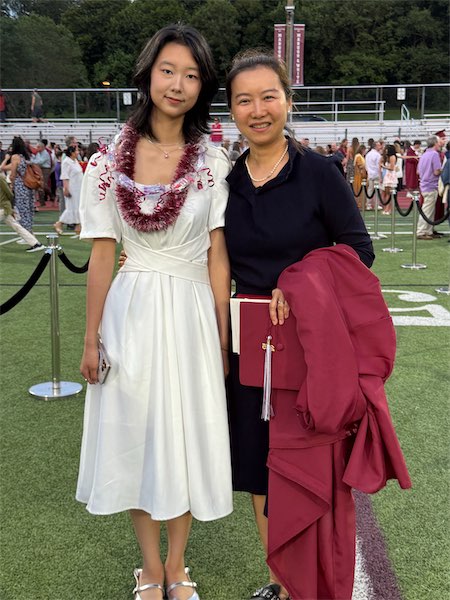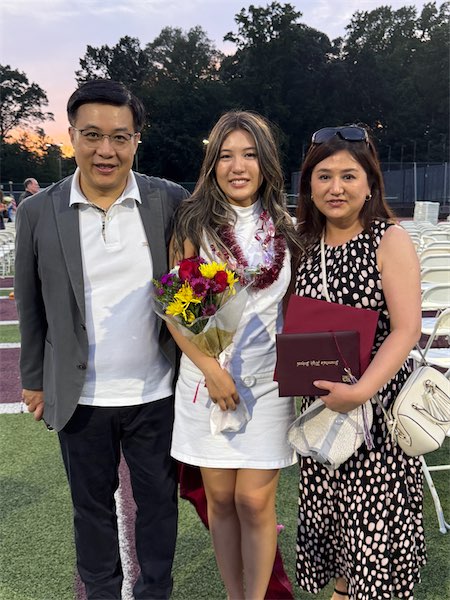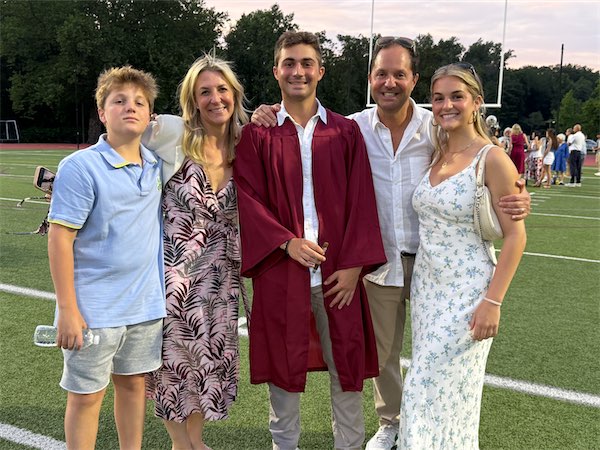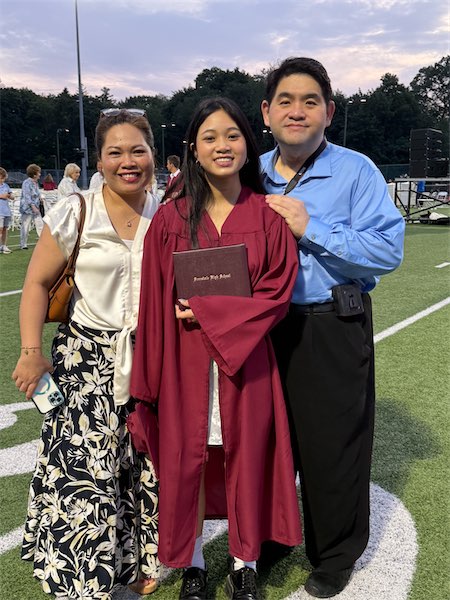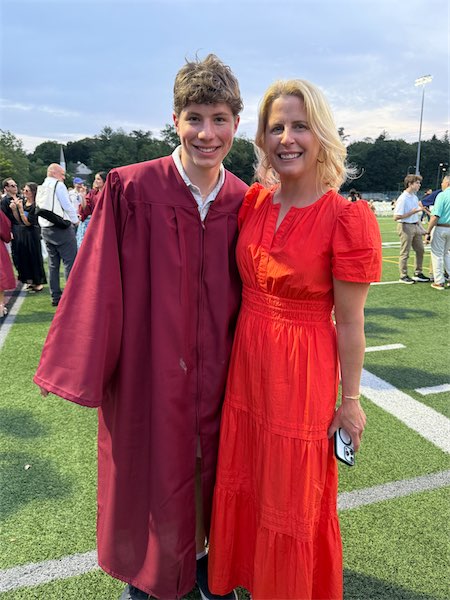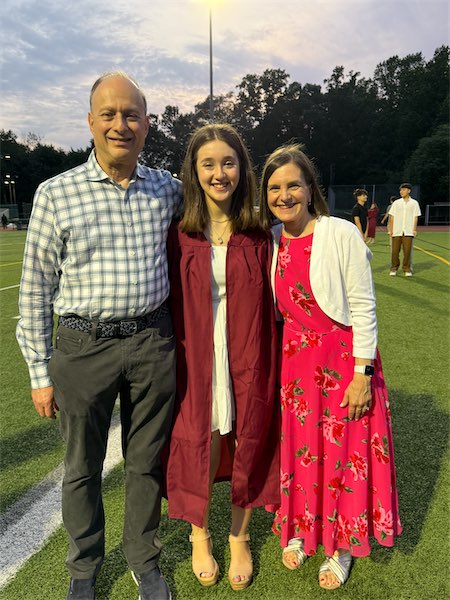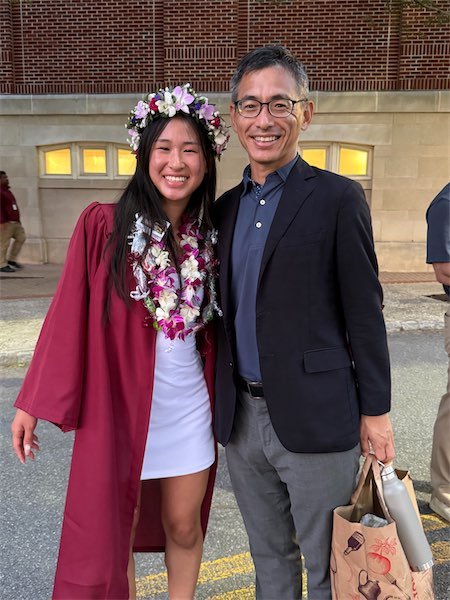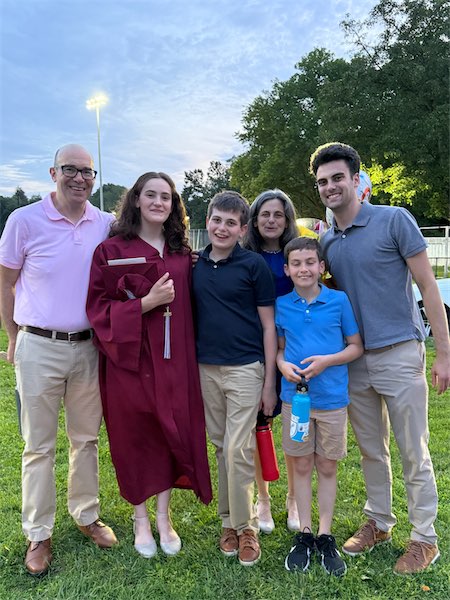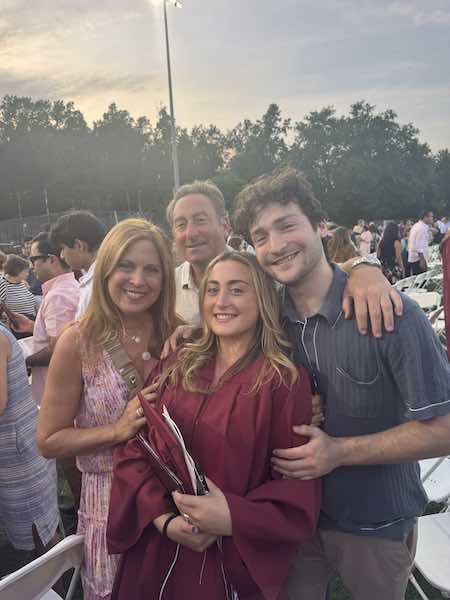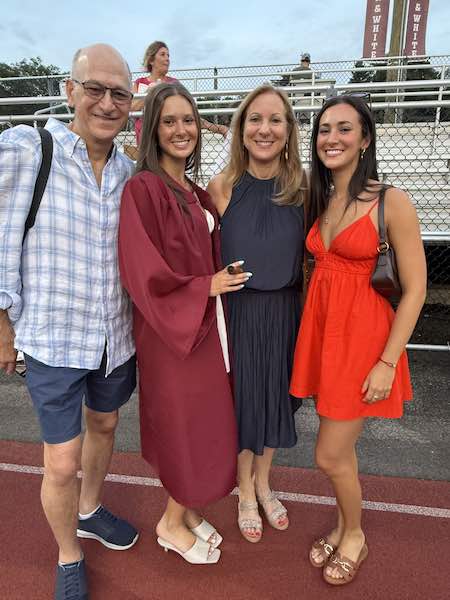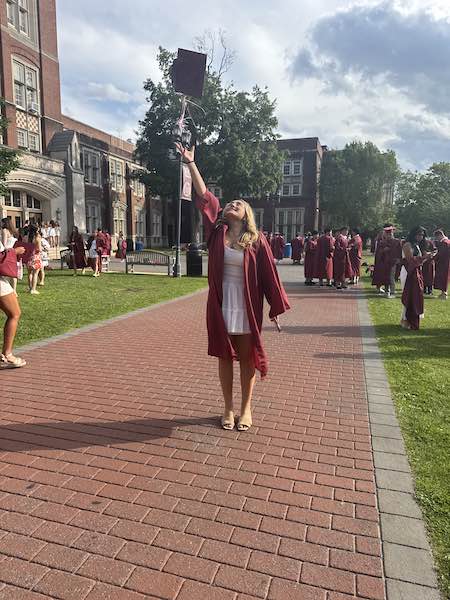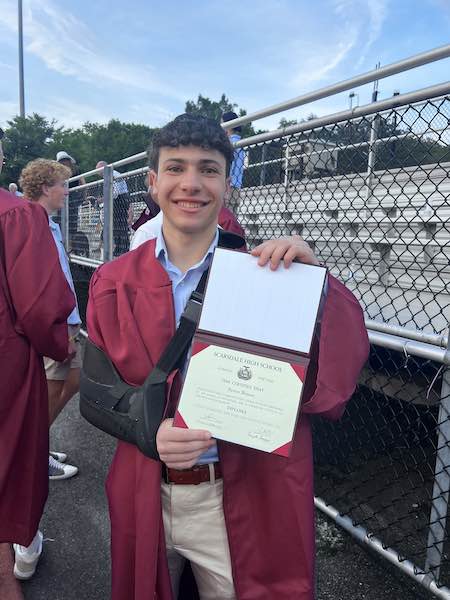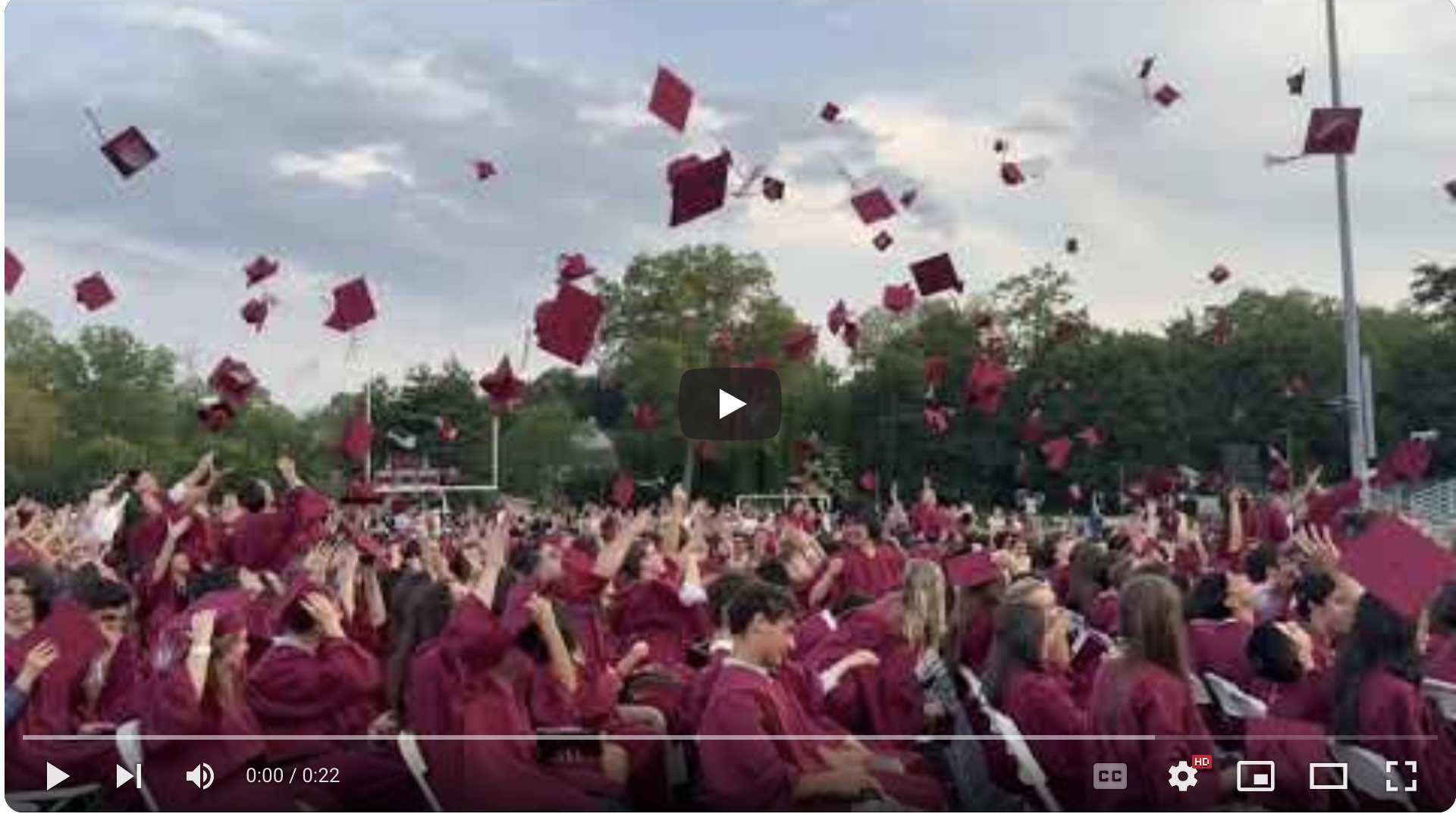District Enacts Smartphone Ban and Announces Community Lunch Program at the High School
- Details
- Written by: Wendy MacMillan
- Hits: 2143
 As most Scarsdale families are trying to enjoy the last few days of summer vacation, the Scarsdale School district is already hard at work preparing to welcome students back into their folds. Earlier this week, Scarsdale High School Principal Ken Bonamo extended a warm greeting to SHS families in an email which not only highlighted details about “new student orientations” taking place next week, but also important information in regards to some big changes at SHS in the 2025-26 school year.
As most Scarsdale families are trying to enjoy the last few days of summer vacation, the Scarsdale School district is already hard at work preparing to welcome students back into their folds. Earlier this week, Scarsdale High School Principal Ken Bonamo extended a warm greeting to SHS families in an email which not only highlighted details about “new student orientations” taking place next week, but also important information in regards to some big changes at SHS in the 2025-26 school year.
As returning high school students will remember, at the end of the last school year SHS piloted a “Community Lunch” program which provided all students and faculty a common lunch time. The pilot’s incredible success encouraged SHS to adopt the program fulltime for the upcoming school year. As stated in his welcome letter, Bonamo explained,
“We are fully implementing the new community lunch schedule, in which all students and teachers eat at the same time every day. This change aims to improve energy and focus, strengthen relationships between students and faculty, and create more time for clubs and academic support. The new schedule, which received positive feedback during a pilot program, will be reviewed quarterly by the Schedule Committee for any necessary adjustments.”
Another change comes after a new state law was recently enacted by Governor Hochul requiring statewide, bell-to-bell restrictions on smartphones in K-12 schools. While SHS had already implemented an “Off and Away For The Day” cell phone policy, Bonamo explained the more robust restrictions in his letter:
“In accordance with New York State law and Board of Education policy, students are prohibited from using internet-enabled devices, such as smartphones and smartwatches, at any time during the school day. Devices must be turned off and put away, including during lunch and passing time. Violations will lead to escalating consequences. Exceptions will be made for students with documented health or learning needs. Laptops and tablets may still be used for academic purposes, and teachers may authorize limited phone use in class. Lockers are available for storing devices.”
Bonamo also referenced a letter sent by Assistant Principal Christopher Griffin who further detailed the protocols and consequences for students who ignore the new rules. As he explains:
“A student who is using a smartphone or a smartwatch during the school day may be subject to disciplinary action. A student found to be in violation of this policy must give their device to a staff member upon request. The staff member will bring the device to the assistant principals’ office. For the first violation of the ban, the assistant principal will return the device to the
student at the end of the day with a warning. After a second violation, the student’s parent or guardian will be required to come to the school to retrieve the device. If there is another violation, the parent will have to retrieve the device and the student will serve two detentions. If the student continues to violate the policy, the school may require additional disciplinary consequences as outlined in our code of conduct.”
While students can’t use their devices to access things like social media during the school day, Mr. Griffin went on to describe that, “Tablets and laptop computers, which are internet-enabled, are often used by students during the school day to complete school work. Unless otherwise restricted by administration, students may use these devices on school grounds to complete academic assignments.”
Griffin ended his letter with the recognition that, “We understand that this will be a significant cultural change at the school. We are hopeful and optimistic that we can establish a climate where students are not distracted by their cell phones and smartwatches so as to better focus on their learning. If you have any questions or thoughts about the implementation of the new law, please feel free to reach out to me. Thank you in advance for your support.”
Though these are certainly significant changes for SHS students, many are expecting the shifts to have an incredibly positive impact on the school’s culture and strengthen its community in a variety of beneficial ways. For more information on the new New York State “Bell to Bell” law, see here.
SHS Class of 1985 40th Reunion
- Details
- Written by: Joanne Wallenstein
- Hits: 1658
 The Scarsdale High School Class of 1985 will hold their 40th reunion on Saturday October, 25, 2025. from 6-9 pm at Chat, 1 Christie Place in Scarsdale.
The Scarsdale High School Class of 1985 will hold their 40th reunion on Saturday October, 25, 2025. from 6-9 pm at Chat, 1 Christie Place in Scarsdale.
Here's information from your classmates:
It’s hard to believe, but our 40th reunion is happening October 2025—and we’re planning a full weekend of fun!
📍 Friday: Tour of SHS, possible football game, happy hour
🎶 Saturday: Main reunion event + after-party with live music from a classmate’s band
🥂 Sunday: “Until Next Time” farewell brunch
We had an amazing time at our 30th in 2015, and we’re expecting around 150 out of our 400 classmates this time!
Not on the list yet?
Join the conversation on Facebook: Scarsdale High School: Class of 1985 or RSVP to the link below.
Let’s make this one to remember! ♥️🤍
#SHS1985 #40YearReunion
Click here for more information
Dugan and Brown to Lead Scarsdale Board of Education
- Details
- Written by: Wendy MacMillan
- Hits: 2516
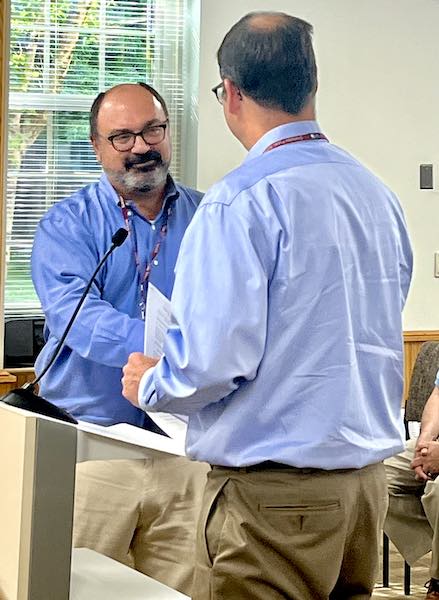 Jim Dugan is the new President of the Scarsdale School BoardWhile Scarsdale students may have just officially started their summer vacations earlier in the week, the Board of Education has already held their first meeting of the 2025-2026 school year! Though the meeting, held on the morning of July 1st, included usual business matters such as member and cabinet updates, perhaps some of the most noteworthy moments took place during the annual Organizational Meeting and the swearing in of new members.
Jim Dugan is the new President of the Scarsdale School BoardWhile Scarsdale students may have just officially started their summer vacations earlier in the week, the Board of Education has already held their first meeting of the 2025-2026 school year! Though the meeting, held on the morning of July 1st, included usual business matters such as member and cabinet updates, perhaps some of the most noteworthy moments took place during the annual Organizational Meeting and the swearing in of new members.
New Leadership
In exciting news the Board elected Jim Dugan as President and Colleen Brown as Vice President for the 2025-2026 school year. In nominating Dugan for President, Brown shared, “Jim Dugan has been an integral member of the Board for the past four years. His ability to bring thoughtful and insightful perspective to every Board discussion has been invaluable in helping us advance our district strategic plan.” And in Brown’s nomination, BOE member Amber Yusef related, “Colleen Brown uses her experience in training as an educator to advance the initiatives the Scarsdale School District in support of our students…Colleen consistently focuses on the needs of our students and our district and Board will be well served by her leadership.”
In addition to these elections, the Board also welcomed its newest Board members starting with Laura Liu who is embarking on her first term. The Board also welcomed its two, new ex officio student Board members Anish Mehta and Lucy Eisenberg. Though having student members of the BOE is a newly adopted policy, Mehta, a rising senior at SHS and Eisenberg, a rising junior, proved in their first meeting that they will contribute an important and valuable perspective.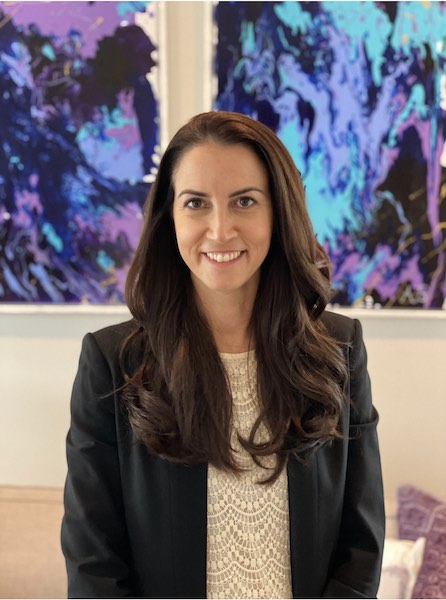 Colleen Brown is the Vice President of the Scarsdale School Board
Colleen Brown is the Vice President of the Scarsdale School Board
New Hires
In related news, during her Personnel Report, Assistant Superintendent for Human Resources, Meghan Troy introduced new faculty appointments including:
Christa Canfield who will be teaching 4th grade at Greenacres Elementary School.
Tamara Barbour will be joining us as an elementary PE teacher at Heathcote School.
Lauren Smith will join Edgewood as a 4th grade classroom teacher.
Matthew Suffern as a music teacher at the elementary level. Mr. Suffern will primarily be an orchestra teacher but will also provide instruction for our band students. He will be assigned to Fox Meadow, Greenacres, and Heathcote Elementary Schools.
Deborah Zides will be joining Scarsdale Middle School as a school psychologist.
Michael Berkowitz will be joining Scarsdale Middle School as a special education teacher.
Katherine Constan will be joining Scarsdale High School as a special education teacher.
Madeline Hyde, will be joining Quaker Ridge as a kindergarten teacher.
Bradley Magnusson as a leave replacement in the area of special education. He will be assigned to Scarsdale Middle School.
Nick Ferraro as the new Director of Facilities.
Congratulations to the Grads
Other highlights of the meeting included a heartfelt congratulations to this year’s graduating students. New BOE President Jim Dugan shared, “Class of 2025 you really deserve all the accolades that came to you and that will come to you. You've worked so hard, grown so much as people and as lifelong learners from your time here at Scarsdale and you are now well prepared to take the next step in your lives and to succeed as you move forward towards your life goals, whatever they may be, even if you're still trying to figure that out, whatever you do next. We wish you all the very best, and congratulations to all our fifth and eighth grade students who have moved up.”
Among other endearing sentiments, Dr. Patrick added, “And I also want to add my congratulations to the 2025, Scarsdale High School graduates and recognize the work and dedication of the high school faculty, staff and administration for really providing an amazing graduation experience for our students.”
To read more about the graduation ceremonies see here.
Girl Scout Gold Award
In her update, BOE member Suzie Hahn celebrated Samantha Levine, a Scarsdale High School senior, who was recently awarded the “Girl Scout Gold Award” the highest award in Girl Scouting that acknowledges the scout’s time, effort, leadership and creativity in designing and completing a sustainable service project that fulfills a need within the community, creates change and continues forward. Hahn reported that at the ceremony, “Dr. Patrick congratulated the young women who achieved this distinction and presented Samantha Levine with a certificate of recognition of her Gold Star achievement for her project called “Simply Cooking with Sam.” Levine’s project created recipes in English and Spanish to support Food Pantry recipients who receive free food but do not know how to make simple, healthy, fast meals with the ingredients found in food pantries.”
Reveal Math
New Vice President of the BOE Colleen Brown also shared an update about the Reveal Math Coffee Morning. As she related, “This event was thoughtfully designed to address concerns raised by our community regarding the Reveal Math program, while also providing insight into the curriculum and collecting additional feedback to help move the program forward in a way that supports all of our students' mathematical learning needs. The session began with the hands-on learning stations led by our own teachers. These stations allowed us to engage directly with the curriculum, experiencing firsthand what our students encounter in the classroom. It also provided the opportunity to hear from teachers across all five elementary schools about their experiences with Reveal Math. Following stations, there was a brief presentation highlighting the specific concerns voiced by the community and outlining the District's plan to address them. This includes targeted summer work, fluency assessments, and supplemental material to strengthen the current curriculum. The event concluded with an interactive, feedback session where parents met in small groups with District staff, Board of Education members, Math Department coordinators and teachers. These small group discussions created space for honest, candid feedback that will be used to guide the District summer work and ensure we are meeting the needs of all learners, helping them grow and thrive in the field of mathematics. I would like to extend a heartfelt thank you to Edgar and his math team for organizing this thoughtful event. I'd also like to thank the District Cabinet members and all the teachers who took time out of their busy day to help deepen our understanding of this curriculum. It is clear that this coffee demonstrated the District's commitment to transparency and strong partnerships with our community. Together, we can continue to support our students as they learn, grow and thrive.”
Later in the meeting when the Board discussed Action Items, Dr. Patrick added his own description of Reveal Math when he provided background information and a proposal for renewing the contract with McGraw-Hill’s Reveal Math for three years. Patrick explained, “Reveal Math was chosen for its balanced approach to conceptual understanding, procedural fluency and problem solving, which supports the evolving needs of our students and aligns with the Next Gen math standards. In choosing to use Reveal tools, we're part of a diverse network of international educators, from Dover, Massachusetts to the International Community School in Singapore and many, many school districts, public and private across the world. This recommendation is the result of careful evaluation of both Reveal Math strength and areas that they need to improve, as well as a commitment to using these insights to guide ongoing professional development, curriculum adjustments, and targeted supplements from non Reveal materials.”
Patrick went on to say, “We're going to continue to use other select resources and publishers beyond Reveal, as we've discussed, and to make Scarsdale specific revisions as necessary. In fact, our elementary math coordinators and elementary teachers have already met once this summer to begin work toward the Fact Fluency benchmarking that we discussed both at the Coffee and at our last meeting. So our goal is to ensure that our instructional materials remain effective and adaptable, helping all of our students develop math fact fluency skills, confidence, and joy in learning math. We really do value the feedback we've received over the course of this year from educators, families, administrators, students, Board members and through various assessments of student learning. We've also shared direct feedback with McGraw Hill about concerns about some of their materials. Some of that feedback has led to immediate changes in their digital resources, (obviously, those move faster than the print in terms of making changes), while other suggestions are being considered for future print updates. By extending our partnership with Reveal Math, we will continue to offer engaging, rigorous math experiences and emphasize essential content, foster deeper conceptual understanding and promote real world applications. We remain dedicated to being responsive using evidence based approaches and informed by research and input from our community, and we welcome ongoing feedback as we work to meet the needs of each of our learners.”
In an update about Safety, Security, and Emergency Management, Mr. Eric Rauschenbach reported that this summer, the District will commence work on the “Door Ajar Sensors” and will be able to put in at least some of the priority doors in each of our schools across the district.
Tax Credits for EV Buses in Question
Assistant Superintendent for Business, Andrew Lennon, also provided an update having to do with the purchase of three new EV buses and his concerns about the EPA grant funding. He related, “The purchase for those buses was using EPA grant funding, District budget resources, as well as the presumption that we would be eligible for some federal tax credits. Given the current market environment, [My team] has concerns about whether we can rely on the federal tax rebates in order to continue to move forward with the program of electrification of our fleet. We've released a purchase order for two of the three busses, which keep us within our budget threshold, and we are continuing to investigate whether or not the federal tax rebates will make its way through the big, beautiful bill that is on debate at the Capitol at the moment, if that bill does lead us to believe that we will be eligible for those credits, we will continue with the third purchase and make sure that we have that third bus in the in the current year budget. If it does not, we will have to update the port on our status of the four total buses that we have EPA funding for.”
Lennon further shared, “Also included in the budget was the eight year lease approval for the EV bus charging infrastructure lease agreement. I am continuing to negotiate with Highland Electric Fleets regarding the terms and conditions of that, as well as fine tune the presumed design information so that we understand both if this agreement continues to make business sense for us, and if it provides us the flexibility we need to be responsive to either the changing landscape of EV buses or our District's ability to go it alone and continue to roll out the EV buses, but not having to partner with outside groups.”
While there were no Public Comments made at this first meeting of the 2025-2026 school year, there was a lot of other information discussed and shared. Watch the meeting in its entirety here.
Some Enchanted Evening: SHS Graduates the Class of 2025
- Details
- Written by: Joanne Wallenstein
- Hits: 2874
 It’s the moment parents and seniors anticipate and dread in equal measure—graduation. A time to look back on years of growth and hard work and to face the bittersweet reality that the children they once knew are now grown and flown. Life at home will never be quite the same.
It’s the moment parents and seniors anticipate and dread in equal measure—graduation. A time to look back on years of growth and hard work and to face the bittersweet reality that the children they once knew are now grown and flown. Life at home will never be quite the same.
With hearts full of memories and eyes set on the future, grandparents, aunts and uncles, parents, teachers, and administrators gathered on Butler Field on the evening of Friday, June 20, to see the transformation of 360 high school seniors into graduates of Scarsdale High School.
Thankfully, the Class of 2025 reached this milestone beneath an azure sky, shielded from the storms and uncertainty of the wider world. The surrounding days brought record-breaking heat and thunderous weather, and the following day the President would declare war. But on Friday evening, time stood still. As the sky shifted from blue to gray to pink, the class, led by Class Advisors Carol D’Angelo and Michael Kumaresan (Dr. K), processed onto the field, cheered on by their teachers who lined the track.
School Board President Suzie Hahn addressed the graduates::
“You have completed a famously rigorous course of study to earn your Scarsdale diploma and demonstrated resilience and fortitude in the face of every challenge. You’ve charted your own paths, both in and out of the classroom, honing essential life skills and developing a strong sense of self.”
She continued, “Be confident that your experiences in Scarsdale have prepared you well for these rapidly changing times. You’ve learned to communicate clearly, listen carefully, and think critically and creatively. You’ve collaborated with classmates, supported each other, and formed lifelong friendships. As you reflect on your time here, I hope you’re as proud of yourselves as we are of you. Watching you grow has been a joy.”
Quoting the school motto Non Sibi—not for oneself—Hahn reminded the class of their responsibility:
“You have so much to offer. Engage with others with kindness and an open heart. And be kind to yourselves, too—for you are precious, and enough. I have every confidence that you will lead with integrity, serve with empathy, and live with purpose.” She closed with warmth: “Don’t forget to call home regularly after you’ve flown the nest—and please, come back and visit us here in Scarsdale.”
Class Officers Amelia Feder and Mason Levy took the stage to thank Advisors D’Angelo and Kumaresan for their unwavering support over the past four years.
“Their constant encouragement shaped our class,” they said. “From prom to community service to barbecues, they helped us pull off incredible events. Whether the issue was big or small, they were always there.” “Señora D’Angelo brings warmth and a love of teaching,” they shared. “Dr. K can explain a calculus problem five different ways until it clicks. But their support went far beyond academics—they made sure we were seen and heard. They helped us be our best selves."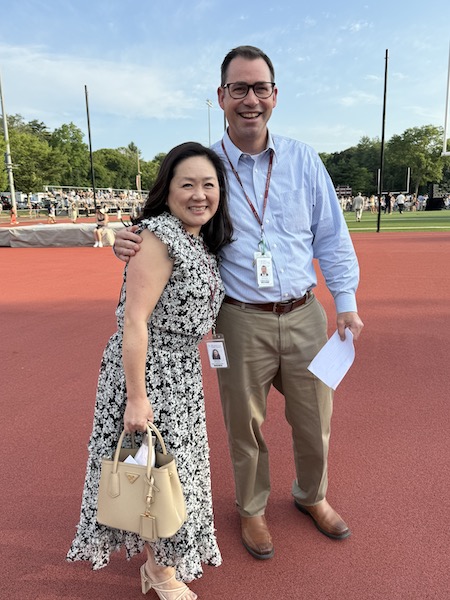 Suzie Hahn and Drew Patrick
Suzie Hahn and Drew Patrick
Señora D’Angelo said, "Today we are charged with leaving you with a last impactful message and so we would like to talk to you about two aspects of life: relationships and responsibilities.
Aristotle said: “Good moral character is not something that we can achieve on our own. We need a culture that supports the conditions under which self-love and friendship flourish.”
Take a minute to look around and see all of the people who made this moment possible and all of the relationships that you made along the way."
Dr. K added, "For most of you, you will never ever have to refer to any of this anymore: chemical equations, the plots of novels, historical dates and names, the quadratic formula, the carbon cycle, Shakespeare, the subjunctive conjugation, the causes of World War I – in real life, people just look that stuff up on Wikipedia – or better yet, ask chat GPT!
So then, what was the deal with all those tests and quizzes and homework?
There are many people in the world who never got the chance to go to school and all those people know why your tests and quizzes and homework were important. They know that they’re missing something. They know the simple truth – that it’s better to know, than to not know. They know that it’s better to read the newspaper than to be uninformed. They know that being able to learn about great literature, the cells in the human body, the chemical composition of the stars, and the fundamental theorem of calculus is a privilege not a chore."
"... So what should you do with this privilege? That we don’t know! But of course, that’s the hard part, because it’s entirely up to you. What we do know is that the world isn’t perfect. We’ve got a lot of problems and challenges.
But you’re a capable group of young people. As your class advisors, here is one last charge: to not only develop deep and meaningful relationships, but also to use the privilege of your education responsibly. Strive to make your own personal future as good as you can, and hopefully to leave your corner of the world a little better than it was when you first got there."
Class Officers Zane Kohn and Arielle Pitchon also expressed gratitude to the school’s faculty and staff:
“We’re here to celebrate our hard work, but we also thank the incredible teachers, deans, aides, and custodians whose help shaped our journey. Our teachers gave us knowledge, critical thinking—and the support we needed to manage the stress of high school.”
Class Vice President Jay Paradkar spoke of the lessons he learned about leadership and resilience, but emphasized, “It’s the sense of community I’ll cherish most… Everywhere we go, we leave a piece of ourselves behind.” He also praised Class President Daniyal Naeem: “He carried the role with pride, enthusiasm, and a great sense of humor.”
Naeem recalled starting high school during the pandemic:
“We entered SHS sitting six feet apart from our friends. But this school taught us to think critically—and to speak up for what we believe in. Soon we’ll be in lecture halls where no one has heard of Scarsdale. But we’ll bring this community with us. We know how to make a difference. We’ve learned to really listen—not just respond. And hey—we’re graduating before the cell phone ban kicks in! I hope you lived the dream these past four years—because I sure did.”
SHS Principal Ken Bonamo gave an insightful address about the impact of Artificial Intelligence on learning and education. He said, “AI presents incredible opportunities and innumerable questions to us as individuals and as a society.” He warned of the risks of AI, similar to nuclear. energy or plastics, “where both the costs and benefits are significant and significantly at odds.” Posing questions about the educational process in the age of AI he said, “If AI can produce a decent or better quality literary response essay or even now a fully cited research paper, are those tasks still valid today as worthy of our time for you to write them and for us to grade them? If they are, how do we protect them from being invalidated by AI—and is that even possible? And if they aren’t worth our effort, then what is?”
Bonamo encouraged students to find meaning amid the uncertainty: “To make sense of all this—the world around you at the moment of your high-school graduation—I urge you to find a through line of humanity, and perhaps to begin by thinking of non sibi, of selfless service."
Read his remarks here:
After wishing the class a bright future, Bonamo turned the podium over to Superintendent Drew Patrick, who formally certified the graduation of the Class of 2025.
Then, one by one, the names of all 360 graduates—some with long and complex pronunciations—were read aloud by the school deans with grace and precision.
The entire event, seamless and heartfelt, was expertly orchestrated by Assistant Principal Andrea O’Gorman, who never misses a beat.
Click here to see the hats fly!
As the ceremony ended, the field filled with joy: students lighting cigars—both girls and boys—posing for photos, embracing friends, and beaming with pride. Darkness settled over Butler Field and the Class of 2025 stepped into the night—well prepared to face the future and the challenges that lie ahead.
Email us at [email protected] to add your photos to the galleries.
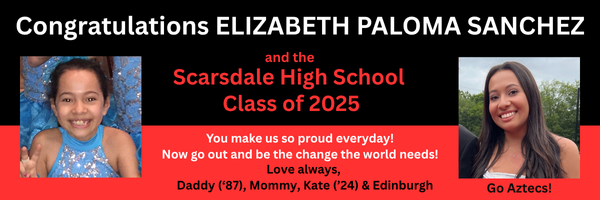


Superintendent Wishes Retiring Teachers Joy and Happiness
- Details
- Written by: Wendy MacMillan
- Hits: 1787
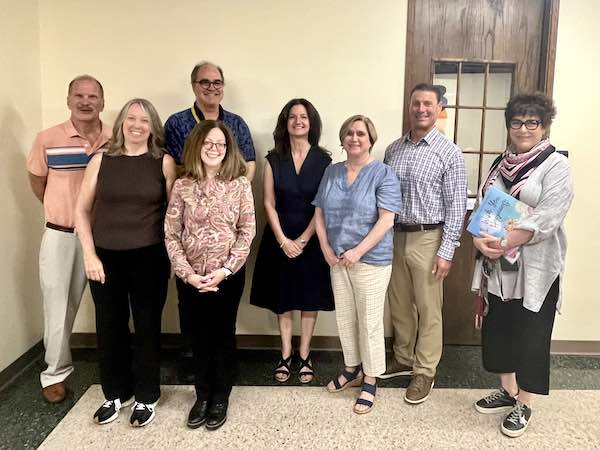 “I wish you imagination and creativity, for the world is a blank canvas to paint your masterpiece. I wish you adventure and curiosity, to go where there is no path and leave a trail. I wish you health and well being, for they are worth more than all the riches in the world.” Assistant Superintendent of Human resources, Megahn Troy, shared these thoughtful sentiments from the children's book, “I Wish You Happiness” in a perfect ode to this year’s retiring faculty members.
“I wish you imagination and creativity, for the world is a blank canvas to paint your masterpiece. I wish you adventure and curiosity, to go where there is no path and leave a trail. I wish you health and well being, for they are worth more than all the riches in the world.” Assistant Superintendent of Human resources, Megahn Troy, shared these thoughtful sentiments from the children's book, “I Wish You Happiness” in a perfect ode to this year’s retiring faculty members.
To start the special Retirement Ceremony held on Monday, June 9th, Superintendent Drew Patrick shared his well wishes to the nine retirees by saying,
“This evening, we are recognizing a group of educators who together have served the district for a collective 227 years. These remarkable individuals approach the work of 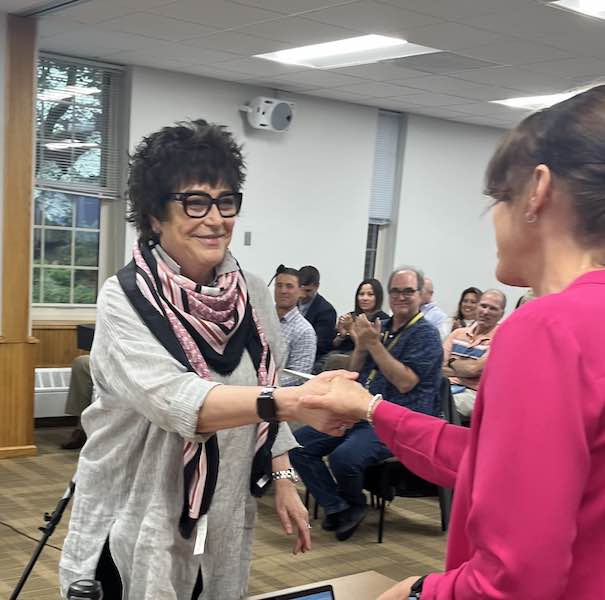 teaching and learning as a mission and as service to our community. Their talent, their dedication, their care, their curricula and their passions brought this mission to life for our students. They created opportunities for thousands of Scarsdale students to experience the joy and richness of thinking and problem solving, reading and writing, speaking and listening, researching and synthesizing hypothesizing and experimenting, playing and collaborating, practicing and performing.
teaching and learning as a mission and as service to our community. Their talent, their dedication, their care, their curricula and their passions brought this mission to life for our students. They created opportunities for thousands of Scarsdale students to experience the joy and richness of thinking and problem solving, reading and writing, speaking and listening, researching and synthesizing hypothesizing and experimenting, playing and collaborating, practicing and performing.
On behalf of a grateful Scarsdale community. I thank you all for your distinctive contributions to our students, to our schools and to our community. Congratulations on your well deserved retirement. We wish you joy and happiness as you continue to pursue your passions, especially on random weekday mornings unencumbered by the first bell.”
Before introducing each retiring faculty member, Troy added, “When I think about your collective and individual impact on our students and the larger school community, it is truly remarkable. You have helped your colleagues to grow and learn. You have supported thousands of Scarsdale families over the years, and have touched and altered the lives of the many students who have sat in your classrooms or in your gyms. As you head into retirement, we have so many hopes for all of you in the future.”
Troy then acknowledged each retiree and invited them up to receive a small gift from the BOE. The retirees include:
Elementary School Teacher, Kim Assatly
PE Teacher, James Borgia
Elementary School Teacher, Susan Hendler
PE Teacher, Health and Wellness Department Chair and Coach, Robert Keith
High School World Language Department Chair and Teacher, Mary Leech
ELA Coordinator, Sue Luft
Elementary School Teacher, Beth Martin
Elementary Instrumental Teacher, Adam Weber
High School Chemistry Teacher, James Williams
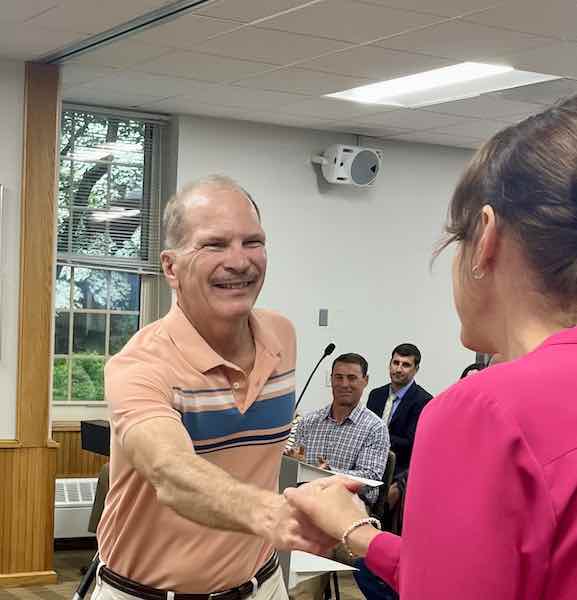 The heartwarming ceremony, attended by colleagues and family, concluded with a thoughtful departing message from BOE president Suzie Hahn,
The heartwarming ceremony, attended by colleagues and family, concluded with a thoughtful departing message from BOE president Suzie Hahn,
“On behalf of the Board, I would also like to express our appreciation to this year's retirees for all that you have done for our students and for our school community. For so many years, you have provided such an important impact to so many students that have come through these hallways and classrooms. Your careers have been distinguished and your contribution significant. Thank you for your unwavering dedication, your years of service and the legacy you leave behind. We wish you joy, rest and new adventures in this next chapter.”

















